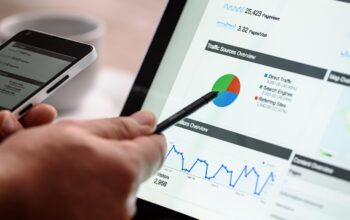Imagine waking up to a world where tablets are not just devices, but catalysts for change. From assisting students in classrooms to streamlining operations in healthcare, tablets are quietly revolutionizing how we work, learn, and live. Let’s dive into the real-world stories of how tablets are undermining traditional practices and ushering in a new era of digital transformation.
1. Education: The Shift to Digital Learning
Tablets are transforming the way we learn by providing interactive digital content and personalized educational experiences. For instance, in many K-12 schools, tablets have replaced textbooks, allowing students to access a wealth of information and interactive learning materials at their fingertips. This shift is not only beneficial for students but also helps teachers track progress more effectively.
Example: Northwestern School Corporation
Northwestern School Corporation is embracing this change by initiating a $1.5 million bond project to equip students with new iPads. This move aligns with a recent law preventing school districts from charging students for devices, ensuring that every child has equal access to quality digital education[3].
2. Healthcare: Better Patient Care
Tablets are also making significant strides in healthcare by streamlining patient care and improving communication among medical staff. Here are a few ways they’re making a difference:
Telemedicine and Remote Consultations
- Kaiser Permanente has seen a substantial increase in telehealth services. During the COVID-19 pandemic, about 40% of its ambulatory care visits were conducted via video calls. This not only reduced hospital visits but also provided better access to healthcare services[6].
Digital Data Management
- Mayo Clinic has collaborated with Google Cloud to create a cloud-based platform that enhances data sharing among healthcare providers. This technology helps in faster diagnosis and treatment by providing real-time access to patient data[6].
3. Workforce Efficiency: Tablets as Tools
In many industries, tablets are emerging as indispensable tools for improving workflow efficiency and employee productivity. Whether it’s enhancing customer service, conducting inventory checks, or managing on-site operations, tablets offer versatility and mobility.
Example: IoT-Enabled Operations
Companies like Johns Hopkins Hospital are using tablets to monitor and analyze data from IoT sensors. This real-time data enables healthcare staff to respond quickly to patient needs, improving care quality without the need for cumbersome paperwork or manual monitoring systems[6].
4. Mobility in Business: Tablets for Sales Teams
Tablets are also transforming sales operations by enabling teams to conduct presentations, manage sales data, and interact with clients more effectively on the go. They provide an all-in-one solution for remote sales meetings, making business presentations more engaging and interactive.
Real-World Impact
Sales teams can use tablets to present products digitally, reducing the need for physical samples. This approach not only saves space but also allows for immediate updates to product demonstrations, keeping clients informed about the latest products and features.
5. Innovation in Entertainment and Creativity
Beyond business and education, tablets are opening new avenues for creative pursuits like art, music, and video production. Artists can now sketch and create on digital canvases with precise stroke control, musicians can compose music directly on their tablets using digital instruments, and videographers can edit footage on the move.
Example: Digital Art Tools
Tablets equipped with styluses like the Apple Pencil offer artists a new medium for creative expression, allowing them to manipulate colors, shapes, and textures with ease. This technology enables artists to experiment with diverse styles without worrying about space or material limitations.
Conclusion
Tablets are proving to be a transformative force in various sectors, from revolutionizing how we learn to making healthcare more efficient. By providing portable, accessible, and user-friendly interfaces, tablets are bridging gaps and driving innovation at an unprecedented pace. Whether in education, healthcare, or creative industries, tablets are becoming increasingly integral to our daily lives and work processes.
References:
- https://www.zdnet.com/collection/ces-2023-the-biggest-trends-for-pros/2107/
- https://www.globenewswire.com/news-release/2025/04/22/3065160/0/en/Data-Storage-Converter-Market-Size-to-Surpass-USD-4-98-Billion-by-2032-Owing-to-Rising-Digital-Transformation-and-Demand-for-Scalable-Data-Infrastructure-SNS-Insider.html
- https://www.govtech.com/tag/digital-transformation
- https://www.tandfonline.com/doi/full/10.1080/2331186X.2025.2489800?src=exp-la
- https://numosaic.com.au/blogs/
- https://www.cflowapps.com/digital-transformation-in-healthcare/
- https://hai-production.s3.amazonaws.com/files/hai_ai_index_report_2025.pdf
- https://www.ijonse.net/index.php/ijonse/article/view/343/166



